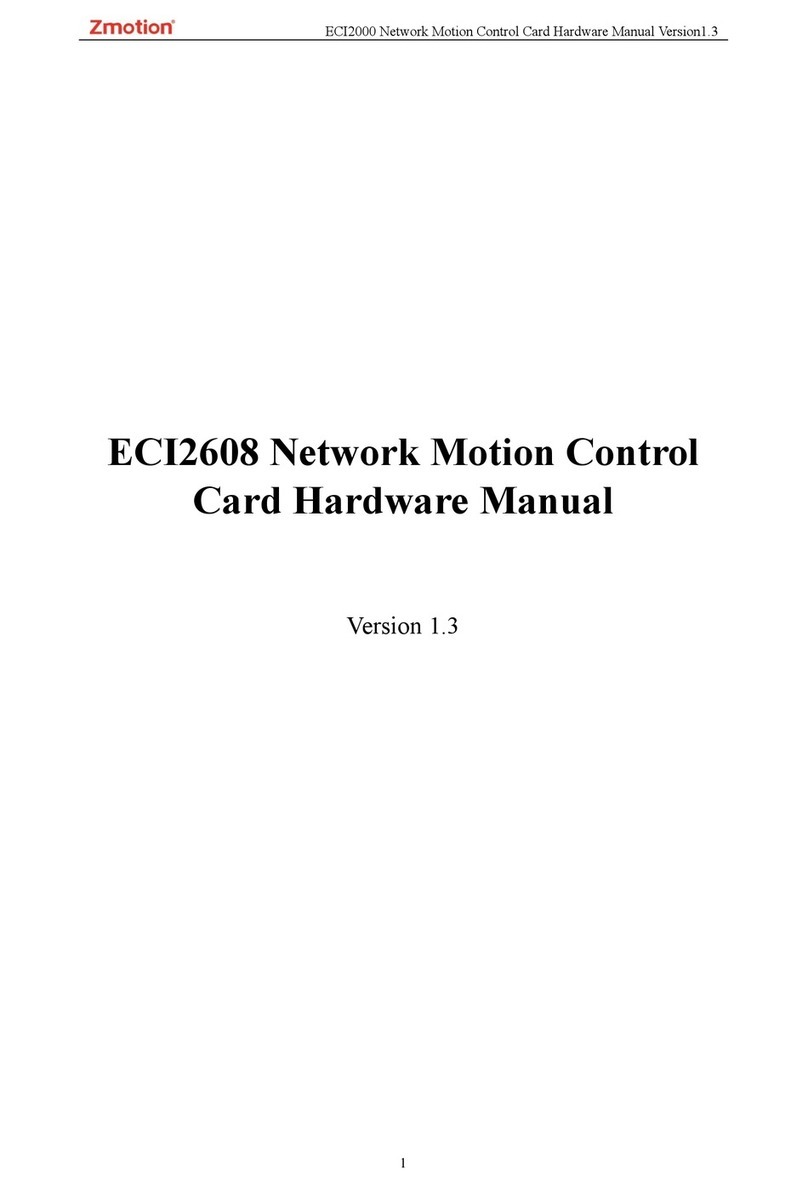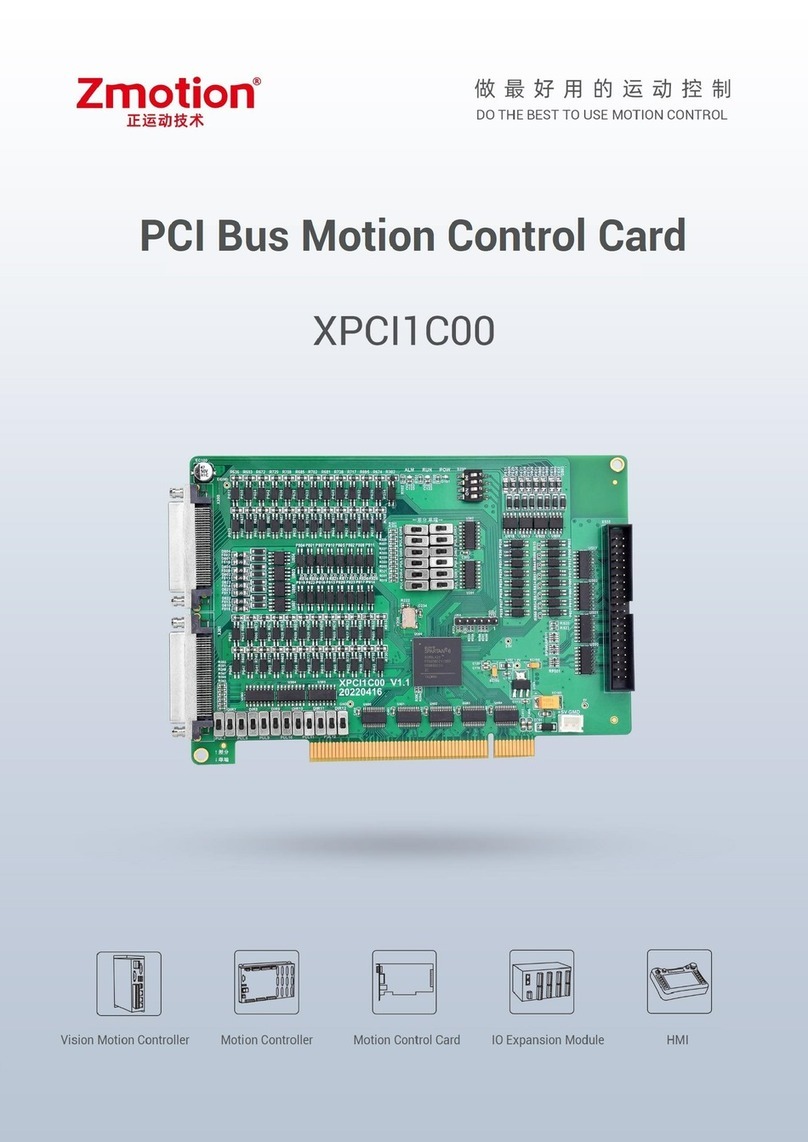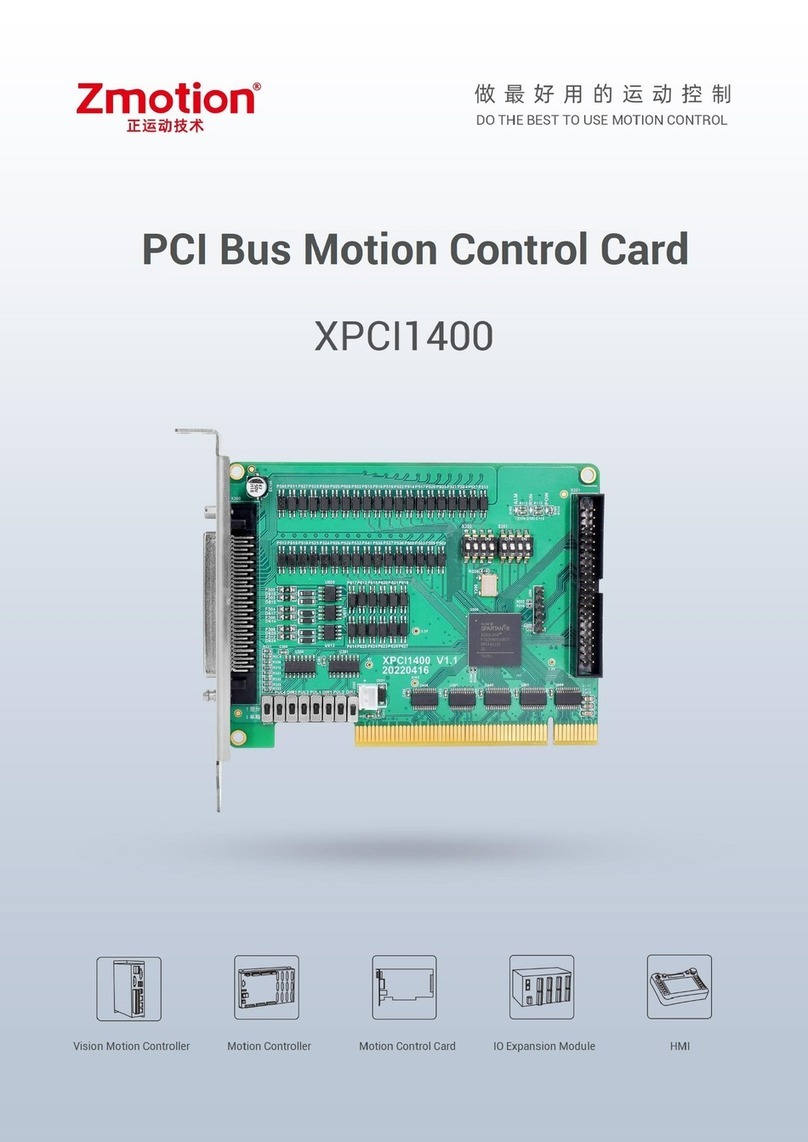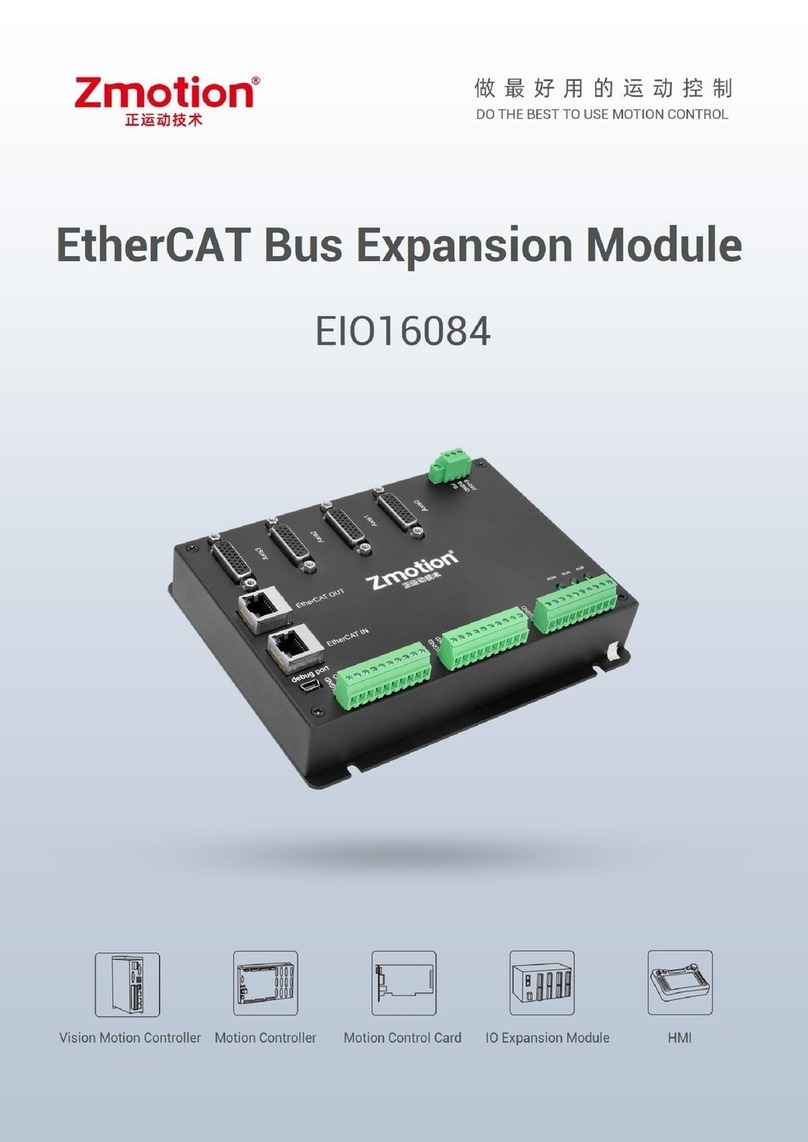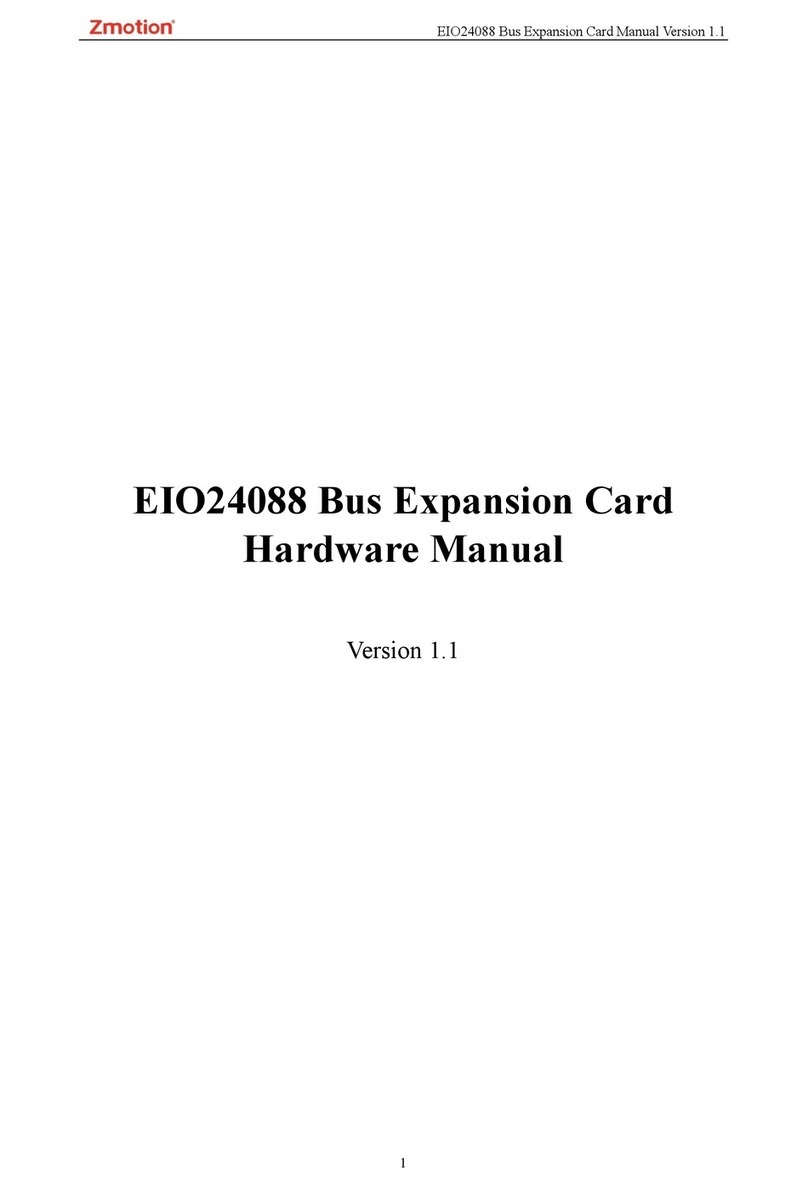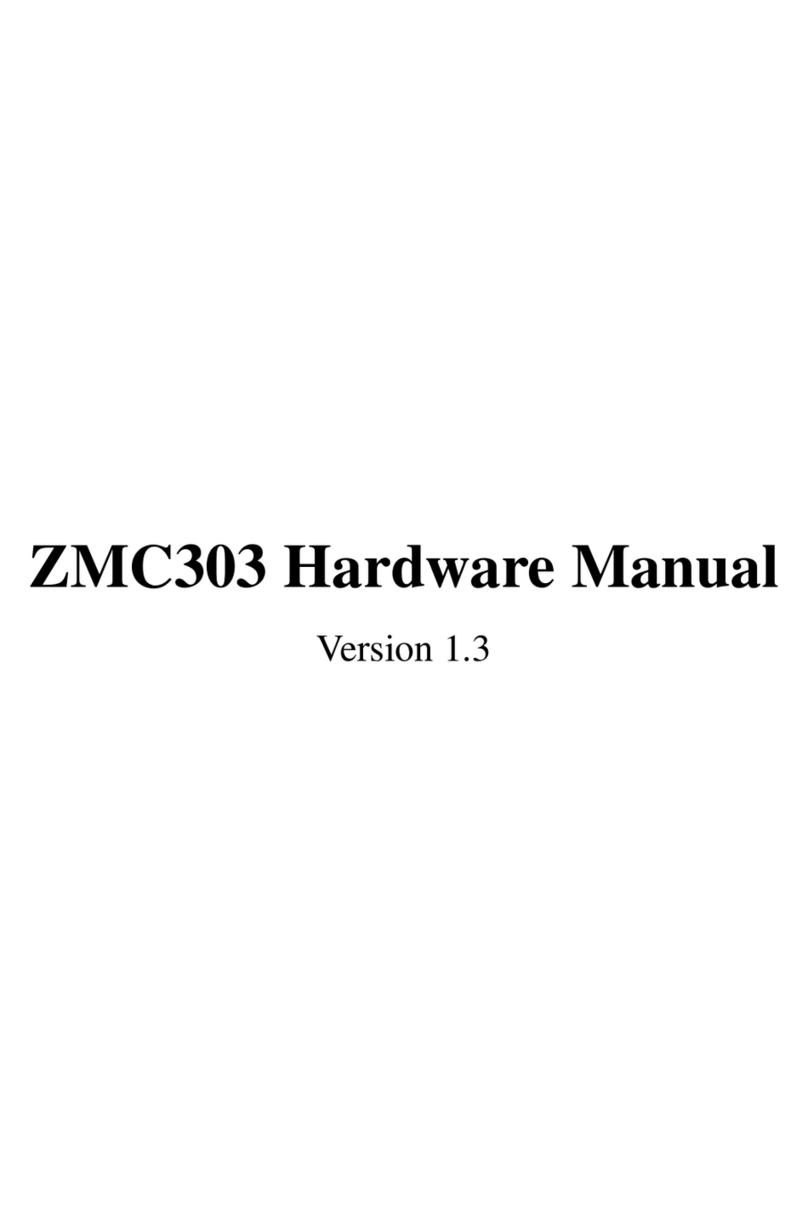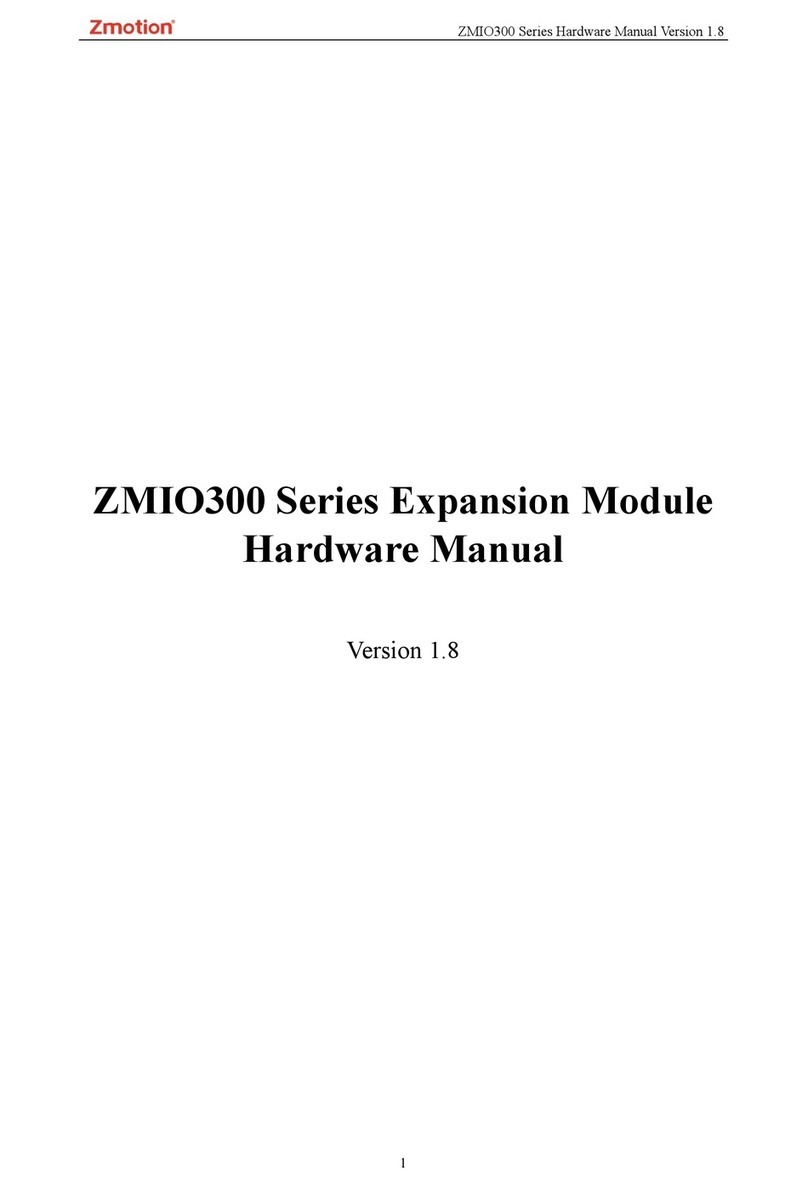XPCIE1028 Motion Control Card User Manual V1.0
Content
Chapter I Production Information........................................................................................3
1.1. Product Information ..........................................................................................3
1.2. Function Features..............................................................................................3
1.3. System Frame ...................................................................................................4
1.4. Hardware Installment........................................................................................5
Chapter II Product Specification .........................................................................................7
2.1. Basic Specification............................................................................................7
2.2. Order Information..............................................................................................7
2.3. Interface Definition............................................................................................8
2.4. Work Environment .............................................................................................9
Chapter III Wiring, Communication Configuration ............................................................10
3.1. IO Power Interface...........................................................................................10
3.2. IO Signal Interface...........................................................................................10
3.2.1. Terminal Definition ...............................................................................11
3.3. P706 Signal Interface......................................................................................12
3.3.1. Local Axis Terminal Definition .............................................................12
3.4. X300 Signal Interface......................................................................................13
3.4.1. ACC37 Wiring Board .............................................................................13
3.4.2. Wiring Board Terminal Definition .........................................................14
3.5. IN: Digital Input................................................................................................15
3.5.1. Digital Input Specification & Wiring .....................................................16
3.5.2. Basic Usage Method ............................................................................17
3.6. OUT: Digital Output..........................................................................................17
3.6.1. Digital Output Specification & Wiring...................................................17
3.6.2. Basic Usage Method ............................................................................19
3.7. Pulse Axis Specification & Wiring ...................................................................20
3.7.1. Single-ended Axis Interface Specification & Wiring ............................20
3.7.2. Local Axis Interface Specification & Wiring .........................................21
3.7.3. Basic Usage Method ............................................................................24
3.8. DIP Switch .......................................................................................................26
3.8.1. DIP Switch ............................................................................................26
Chapter IV Accessories .....................................................................................................27
4.1. Optional Accessories ......................................................................................27
Chapter V Installation........................................................................................................29
5.1. XPCIE1028 Installation....................................................................................29
5.2. Drive Program Installation ..............................................................................29
5.3. Ordinary Network Card Install EtherCAT Bus Protocol ...................................35
Chapter VI Program & Applications...................................................................................40













